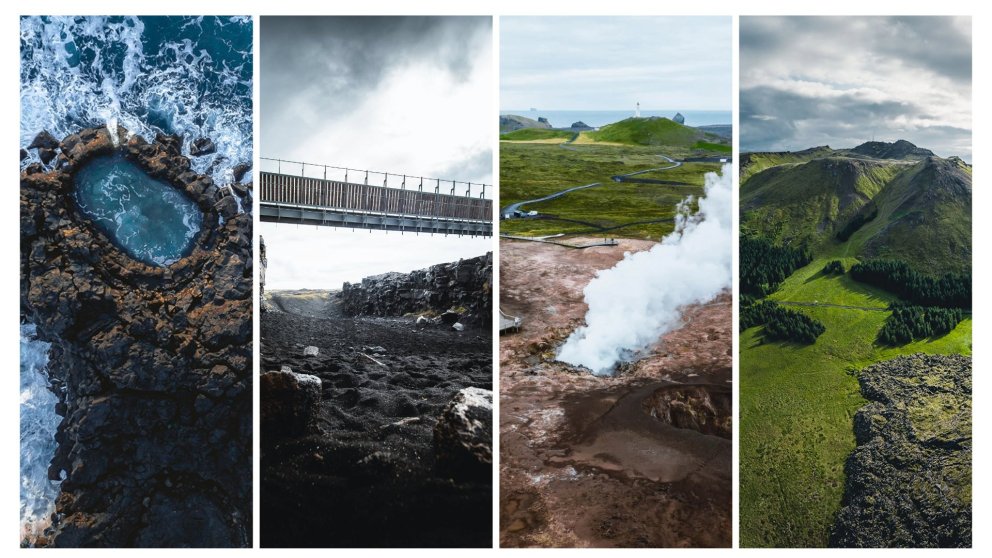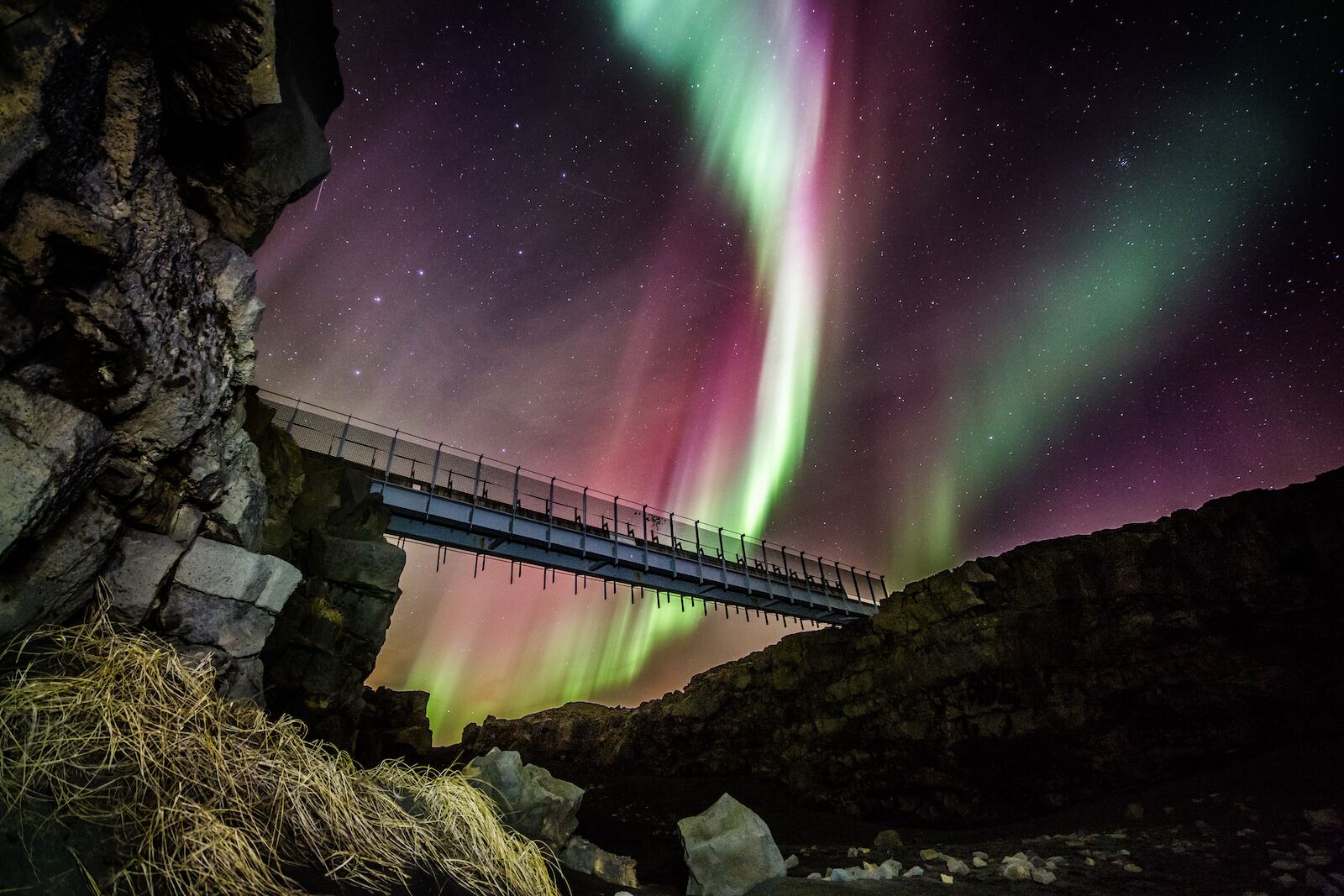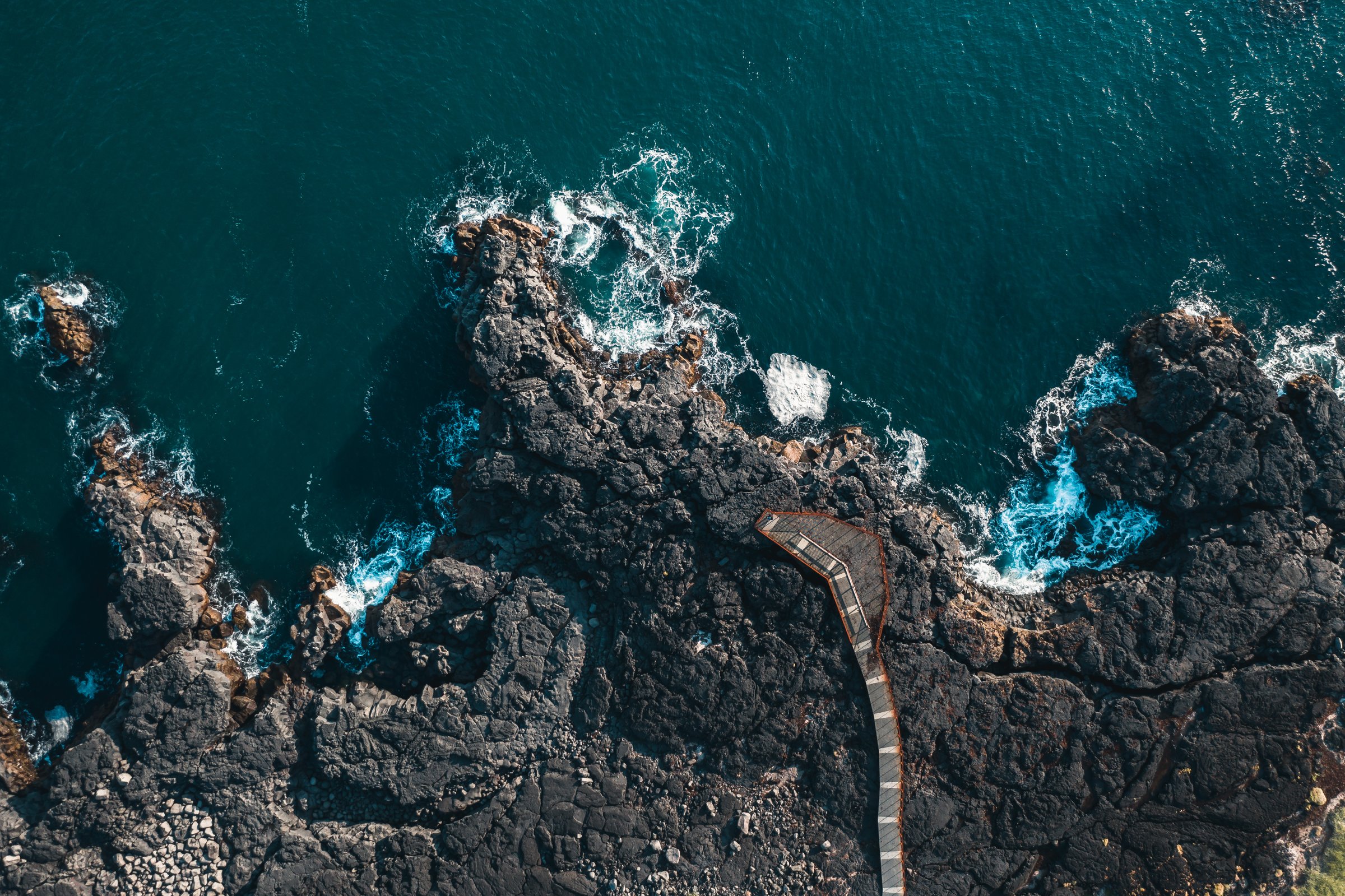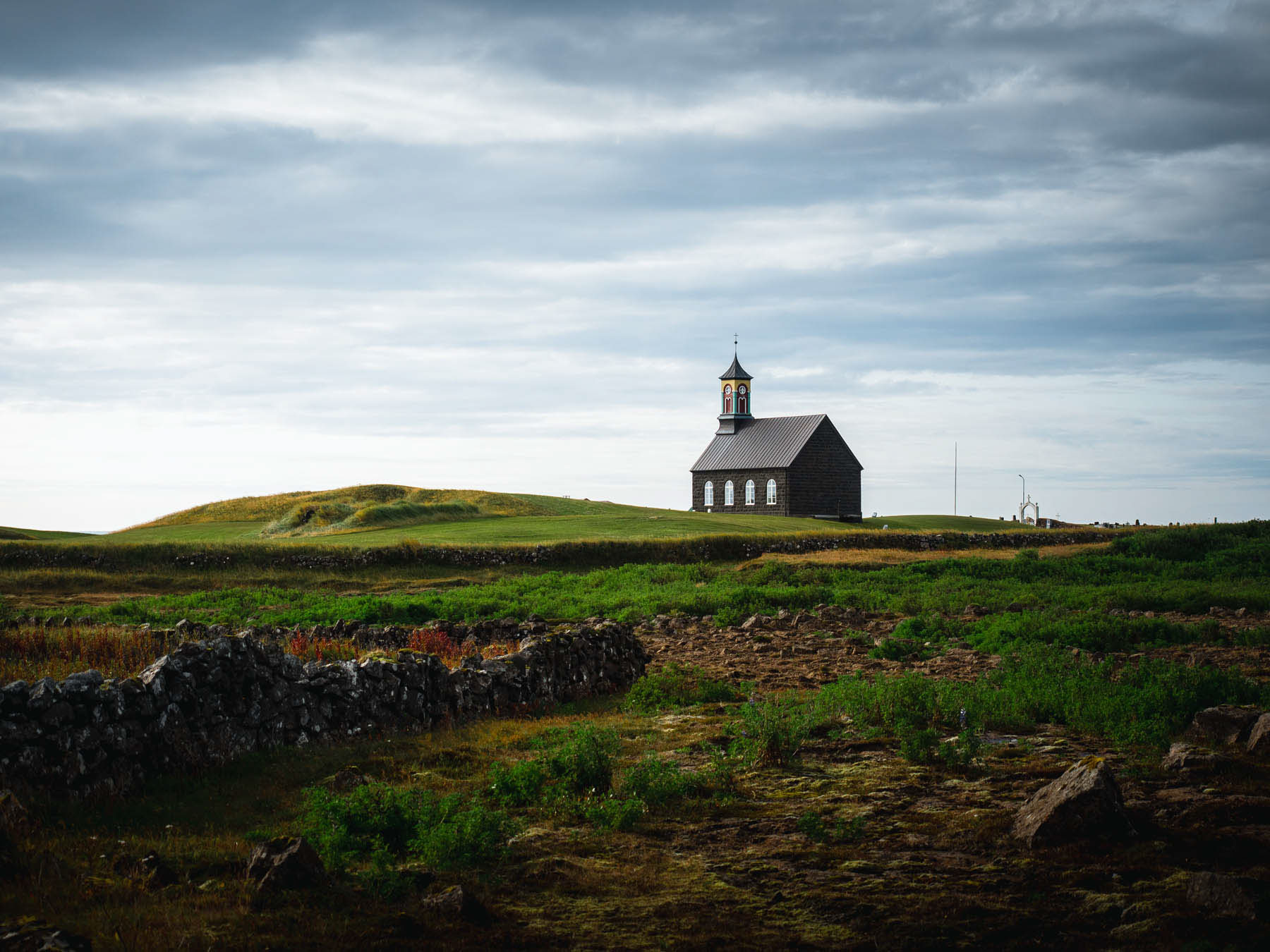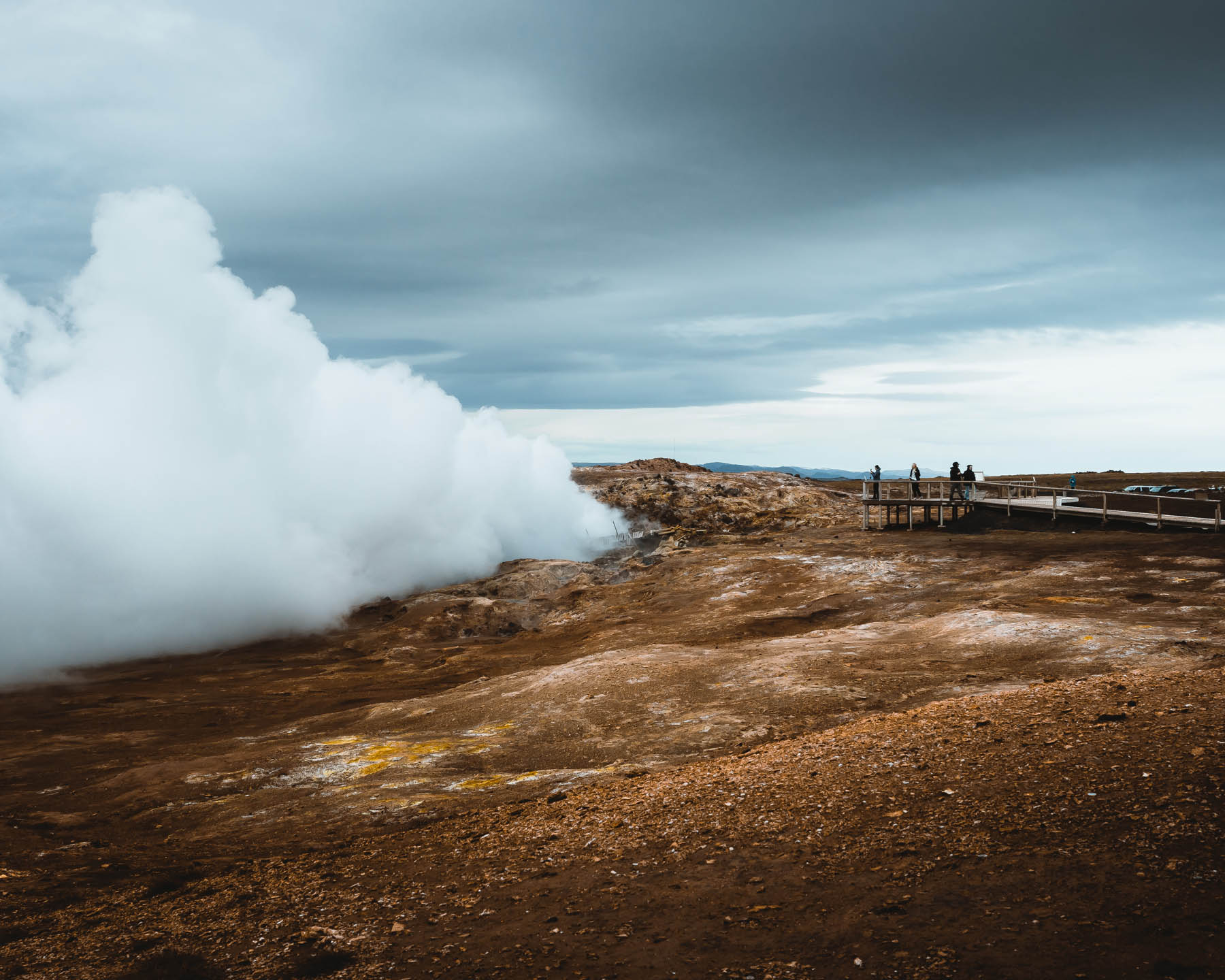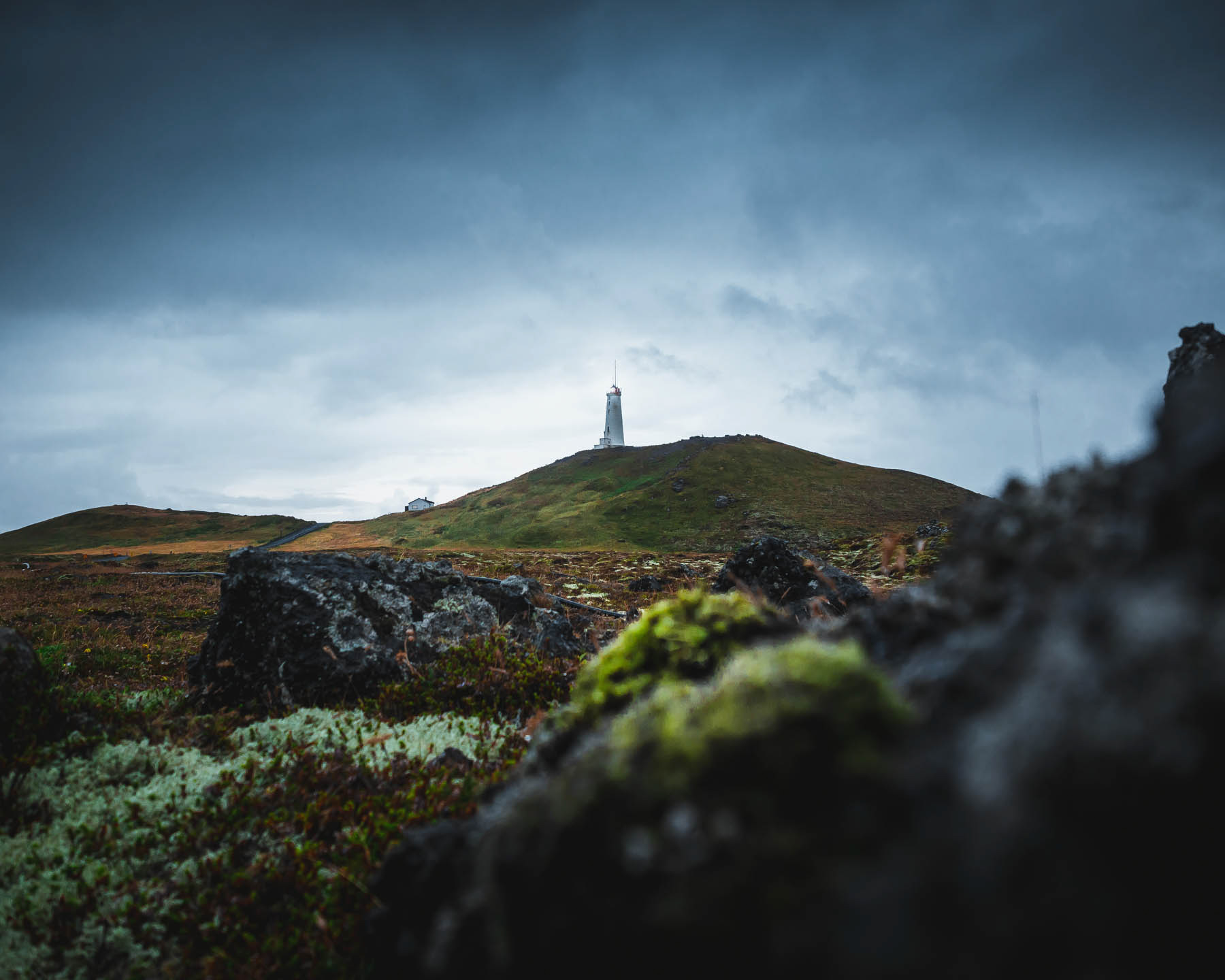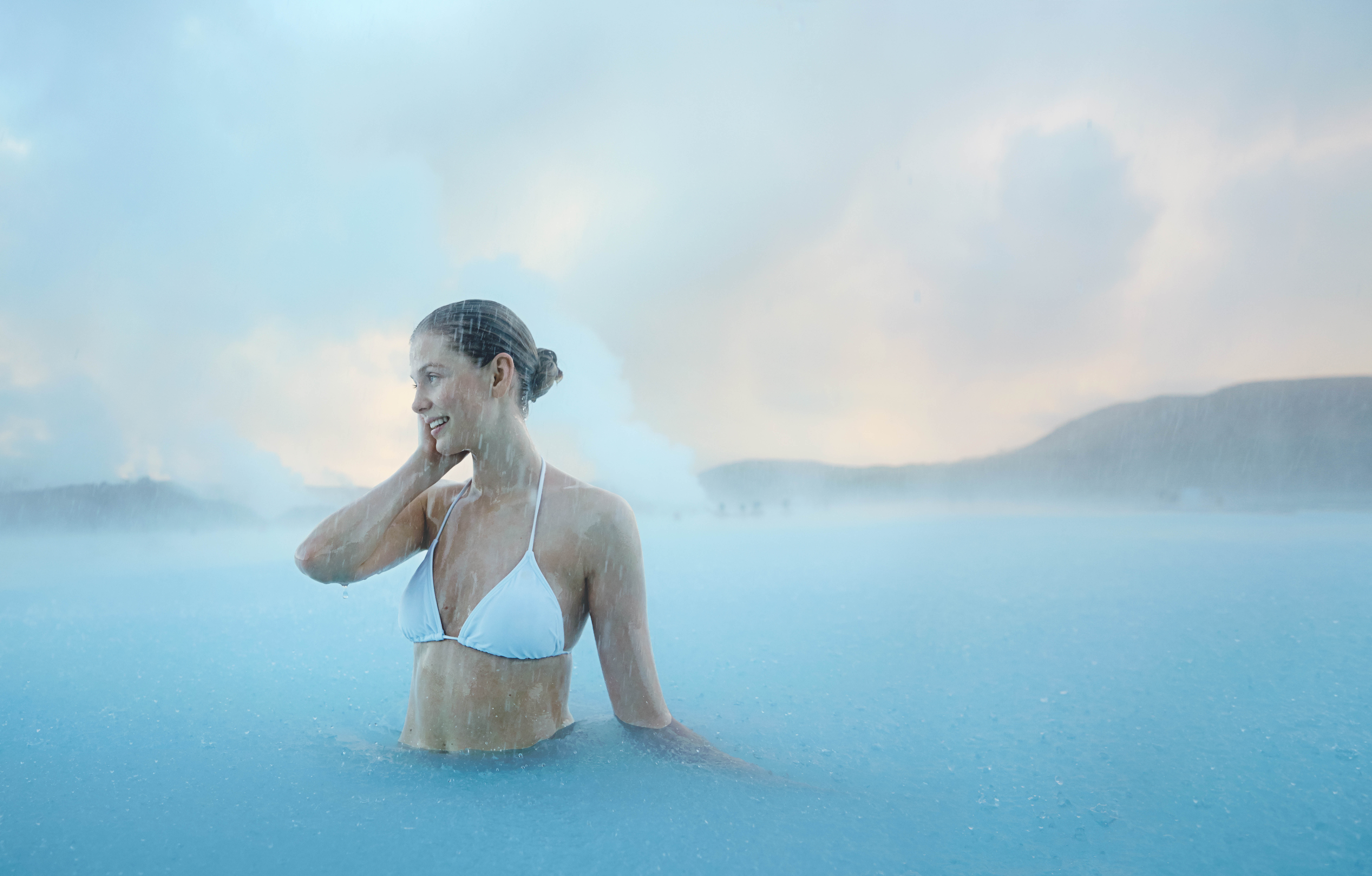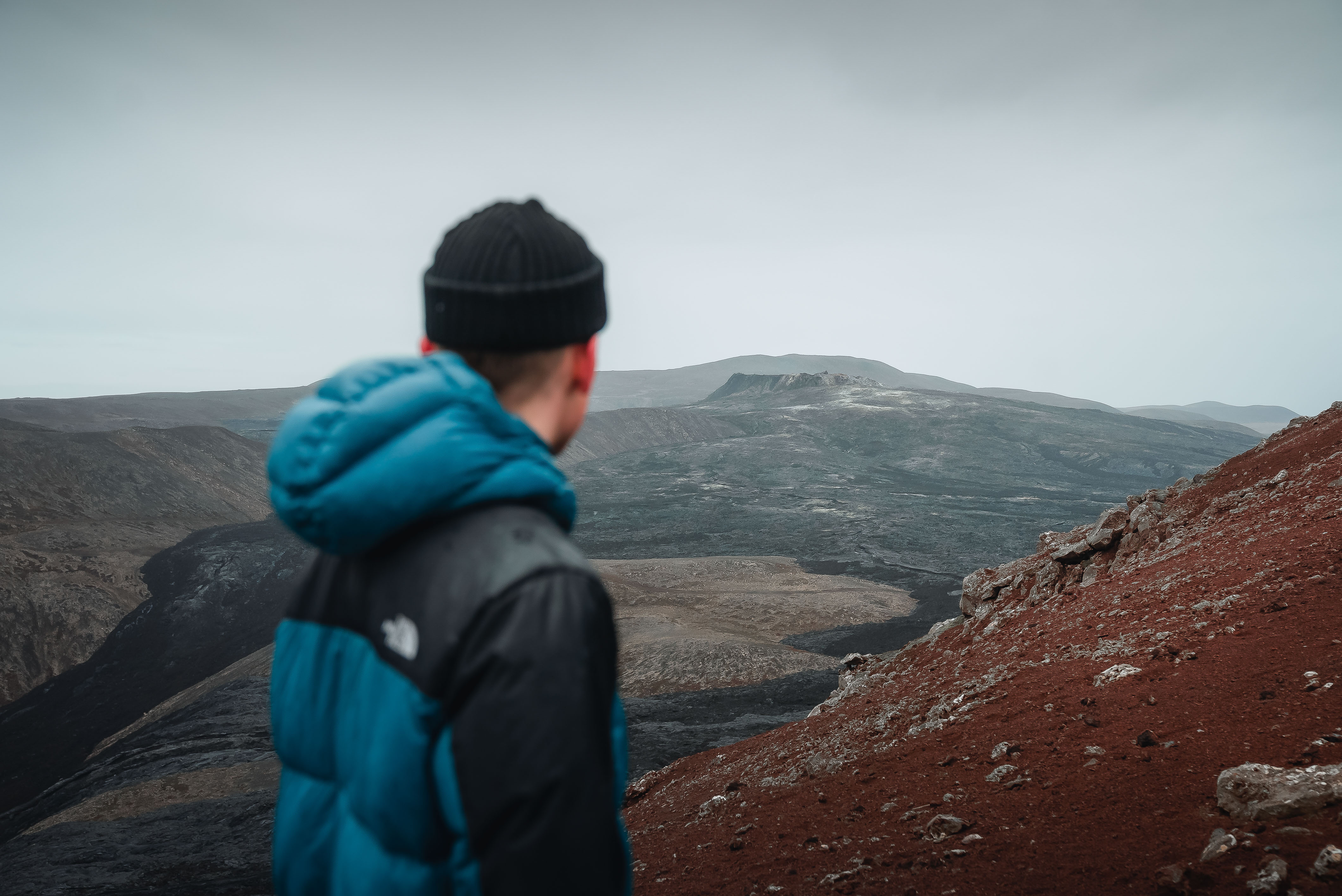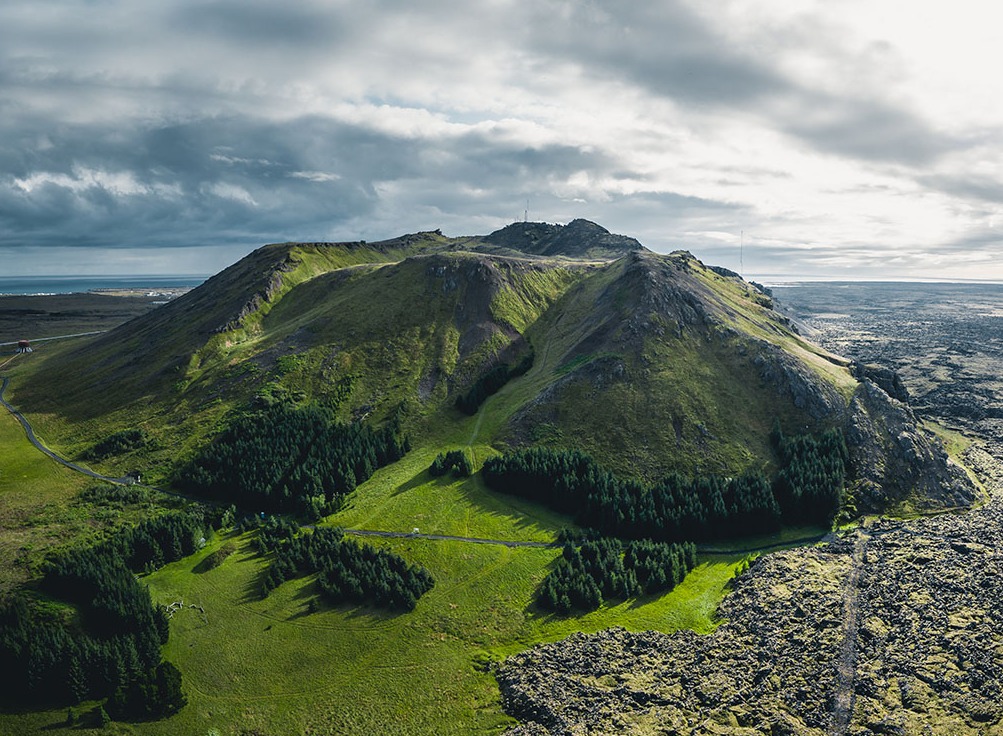The Top Attractions of Reykjanes: What the Locals recommend
There’s nothing like a bit of local knowledge when it comes to planning a trip overseas. Think about it: if you live somewhere, you know it like the back of your hand. There’s no need to pore over review sites and guide books. Word of mouth and personal experience means you’ve visited all the area’s top attractions – or have them on your list to tick off when you have a spare weekend. So if you’ve a visit to Iceland coming up and if you’re keen to get straight to the highlights, here are the top attractions of Reykjanes, as recommended by the locals.
The Bridge between Continents
One of the coolest activities to do during a visit to Iceland is to cross from one continent to another. Reykjanes is home to the Bridge between Continents, also known as Leif the Lucky’s Bridge, which is probably the best place in the country to do so – and certainly the easiest. This is one place the locals recommend, and you won’t be disappointed if you follow their advice.
In this part of Reykjanes, the ground looks a little unusual. If you didn’t know better, you could be forgiven for thinking someone has built a bridge across a dried-up river bed. But this isn’t some drought-induced folly. In fact, this rip in the landscape is where the North American and Eurasian tectonic plates are pulling apart. New land is being created right there beneath the bridge, which is a jaw-dropping concept if you stop to think about it.
It’s a slow process, however, only a few centimetres a year, which is why it has been possible to span the gap with a bridge without the whole thing collapsing. So if you’ve ever fancied walking from Europe to North America, you can do so in a matter of minutes – and you won’t have travelled more than a few hundred metres from where you parked the car. But as you do, remember this: imperceptibly, every day, the two continents creep further away from each other.
Brimketill
Forget skyscrapers, bridges and other impressively engineered structures. When it comes to drama, nature is responsible for magnificent landforms that easily compete with the most ambitious construction projects on the planet. Sculpted by wind or water, eroded by glaciers or waves, the world’s landforms are as varied as they are breathtaking.
One of the most remarkable places on the Reykjanes peninsula is Brimketill. Ancient lava flows reached right to the shoreline and as you’ll see at Brimketill, where they do so, they’re constantly changing. Battered by crashing waves during storms and smoothed by the ebb and flow of the tide when the weather’s calmer, this is an incredible place. It’s really photogenic too, particularly on a sunny day which enhances the blue of the water, so bring a camera.
The result – for now at least – is a circular pool carved out of the rock. It’s a mesmerising sight and you’ll want to come at low tide to be able to appreciate the shape of this unusual landform. Nevertheless, as any local will tell you, appearances can be deceptive and though this looks like it could be the ideal place for a dip, don’t be tempted to go for a swim as this can be a treacherous part of the coast even in fine weather. Not for nothing does the name translate to “whitewater cauldron”.
As with many of the features of Iceland’s natural landscape, there’s a bit of folklore associated with this place too. The tale references Brimketill’s historical name. In the past, it was called Oddnýjarlaug, or “Oddný’s Pool”. The name refers to a giantess called Oddný.According to the legend, at night, she comes here to bathe and wash her clothes. As the sun rises, like all trolls, she turns to stone.
Hvalsnes/Hvalsneskirkja
Throughout history there have been generous benefactors who put up the finance for projects that benefit the community. One such person was Ketill Ketilsson. He was a wealthy landowner who owned the Kotvogur Estate near Hafnir and who’d made his money on fishing and farming. He also owned another patch of land a little to the north at Hvalsnes. (By the way, don’t confuse it with the similarly named Hvalnes, which is over in East Iceland.)
Hvalsneskirkja, located west of Keflavik Airport, was consecrated on that ground in 1887. Since the Middle Ages, a church had previously stood on the site. This would be a significant upgrade. This beautiful place of worship features stone that was hand-carved from the local rock. The wood used in the interior of the church started out as driftwood, washed up on nearby beaches. Services are still held here today, in this magical place.
The churchyard reveals some treasures too. This is the final resting place of Steinunn Hallgrímsdóttir, who died in 1649 aged just four. She was the daughter of the priest Hallgrimur Petursson, who at one term served in Hvalsnes. (You’ll have heard of him: he lends his name to Hallgrimskirkja, that fabulous church in Reykjavik.) Her gravestone was lost for a while, but had been part of the pathway all along; it’s now fully visible.
Kleifarvatn
Another place the locals recommend you visit in Reykjanes is Kleifarvatn, situated between Sveifluháls and Vatnshlíð. “Vatn” means lake in Icelandic and there are numerous bodies of water littered throughout the peninsula. This one is the largest, and it has an area of about 10 km². Actually, though, the lake’s catchment is quite small and there’s very little runoff feeding it from the surface.
The depth is also impressive. At its deepest point, the water extends down 97 metres, making this one of the deepest lakes in the country. For the most part, the lake is a cold body of water. To the very south of the lake, there’s a small hot spring which feeds into the lake. But, as Kleifarvatn is so big and so deep, that heat is quickly diluted by the cold water that surrounds it.
The lake has also undergone some changes thanks to the tectonic activity that the area has experienced. In the 21st century, there have been a couple of significant earthquakes in the area and these have caused fissures to open up beneath the lake’s surface. As a result, the water level has fallen.
Nevertheless, Kleifarvatn is still used for fishing. More than five decades ago, Arctic char were released into the lake; they’d been brought over from Lake Hlidarvatn. You’ll probably notice a small fishing hut on the lake shore. It’s also a popular spot for photographers, who come to record the volcanic scenery at the water’s edge. If you join them, keep your eyes peeled for a monster in the shape of a worm; Iceland’s answer to Nessie (Scotland’s Loch Ness monster) is believed to lurk in the lake.
Gunnuhver
Iceland boasts a number of geothermal zones. Unlike Haukadalur on the Golden Circle route, Gunnuhver is less heavily trafficked. Most of us – admit it – like to think we’ve found somewhere on our travels that isn’t squarely on the beaten track. So, take heed of what the locals in Reykjanes would say and add this place to your itinerary.
This extraordinary place is home to Iceland’s largest mud pool, which spans a mind-blowing twenty metres in diameter. The site also features a plethora of vents spewing clouds ofsuperheated steam, giving the place an otherworldly, almost eerie feel. Gases such as carbon dioxide and hydrogen sulphide swirl in the air, a reminder that Reykjanes is young in geological terms and constantly evolving.
Gunnuhver is also the setting for an Icelandic folklore tale. Centuries ago, Gunna lived in poverty on a farm. She couldn’t pay her rent and her landlord took a cooking pot as payment instead. Enraged at the loss of an essential possession, Gunna starved herself to death in protest. But Gunna’s ghost murdered the landlord and his wife, taunting and terrifying local residents in equal measure.
Desperate for help, they turned to a priest. He gave them a ball of string, which they threw into the hot spring as he instructed. The ghost of Gunna, as expected, followed the yarn until she fell into the boiling water. It’s said that if you look carefully through the mist, you might see a ghostly figure thrashing about trying to escape.
Reykjanes Lighthouse and its surroundings
On rocky coastlines such as those you find in Iceland, unseen hazards in the water can prove disastrous for ships and smaller boats. Over the centuries, many have foundered on the rocks and protecting the lives and livelihoods of mariners is a priority as a result. This situation has led to the construction of numerous lighthouses around the country’s shores.
The oldest of these working lighthouses is the Reykjanes lighthouse. It replaced a short lived structure that had been erected at Valahnúkur in 1878. Unfortunately, it had only stood for a few years before the shaking by earthquakes irreparably damaged it and the sea took its toll. Luckily, the same fate hasn’t befallen the current Reykjanes lighthouse, which dates from 1908.
Sensibly, the construction team built it further inland. It sits on the top of a small hill called Bæjarfell which boosts its height (and therefore the distance from where you can see it) considerably. Little has changed over the years, though there’s been one significant upgrade.Kerosene, which fuelled the original lamp, has been replaced by gas. Today, the light flashes twice every 30 seconds.
Garðskagi/Garðskagaviti
The locals of Reykjanes also recommend that Garðskagi is worth a visit. This westerly headland is a great place to spot seabirds and in summer there’s a crescent of white sand for those who can’t resist a beach. You’ll also find a small museum dedicated to the heritage of the area, with a collection of machinery, tools and maritime paraphernalia. If the weather’s fine, grab a seat on the deck of the café and keep a lookout for seals and whales that sometimes pass by this stretch of coastline.
But Garðskagi’s biggest draw is the pair of lighthouses you find here: yes, the Reykjanes lighthouse isn’t the only such landmark in the area. The older of the two, squat and stripey, dates from 1897. Standing just 12.5 metres tall, it took a battering from the ocean in stormy weather. Though it is no longer in use, it was never knocked down.
Back in the day, though it lacked height, it had one great advantage. If the cloud came down, the mist often began above the light, enabling it still to be visible, when a taller one might be completely obscured by the fog. In 1944, a newer, taller neighbour was built. Known as Garðskagaviti (in Icelandic, viti means lighthouse) it measures 28 metres tall. In 1946 it was upgraded with electricity.
The Blue Lagoon
There’s something very special about the Blue Lagoon. It’s been a fixture on the Reykjanes landscape for more than three decades. Over the years, the facilities have been improved to incorporate stylish hotels, upscale dining and a wide range of spa treatments. But the main attraction is, just as it always was, the water.
The geothermally heated water of the Blue Lagoon is a milky blue. It’s a beautiful sight juxtaposed against the charcoal grey of the lava walls that surround it. In the background, there’s a clue to its origin: the water is actually a by-product of the nearby power station, which you can see in the background.
Locals and visitors alike will appreciate the attention to detail that has gone into this place, which is one of the most luxurious spas in the country. It’s a great place to relax and unwind, as well as a popular spot to come with friends and socialise. It’s little wonder that residents recommend it as one of the top attractions of Reykjanes.
Fagradalsfjall
Let’s not forget the volcano which sprang to life unexpectedly in 2021 after being dormant for around 800 years. While the unexpected Fagradalsfjall eruption made the world sit up and take notice, it captured the attention of local residents too. They joined international visitors to hike along newly marked paths, keen to see for themselves the impact this volcano was having on the landscape.
Of course, Icelanders are used to volcanic activity. There are 32 active volcanoes in the country, including regular performers such as Katla and infamous headline grabbers such as Eyjafjallajökull. The Fagradalsfjall eruption started out with a telltale increase in seismic activity, followed by months of dramatic lava fountains and smoking cones.
After a significant lull in activity, the action kicked off again in 2022 and, very briefly, again in 2023. The hiking trails have been rerouted as new craters opened up and far-reaching lava flows cut off viewpoints. But it’s still a fascinating landscape to explore on foot, so pack your boots and see what the sulphur-splattered, hardened lava looks like close up.
Mt. Þorbjörn
Mt. Þorbjörn (also written Thorbjörn) lies inland, just north of Grindavik in the south of the Reykjanes peninsula. Given its proximity to Fagradalsfjall, you won’t be surprised to learn that it’s volcanic in origin. It was created because of subglacial eruptions in the Pleistocene era, which is where the hyaloclastitic (glass-like) rock comes from. It’s not hard to see why locals would recommend you visit it.
Lava fields surround the mountain, which forms part of the Reykjanes volcanic system. If you understand a little about geology, you’ll also notice the presence of a graben. This is where part of the earth’s crust is displaced downwards as it lies between two faults. Locals know this as the “Thieves’ Gap” from Icelandic folklore.
If you’re up for the hike, the elevation delivers a breathtaking view. In fact, from the top of its 243 metre high summit, you can see the Blue Lagoon and the geothermal power plant beside it. There’s a jeep track; it was constructed by the US Army during their time in Iceland so they could access a radar station. These days, the transmitters are for mobile phones and television broadcasting.
As you’ll have appreciated, the variety of attractions in Reykjanes is what makes it so compelling. Whether you’re a fan of nature or enjoy visiting manmade landmarks, this part of Iceland has much to offer. Roads are good, and with a hire car or a tour guide you can easily see these places. Don’t be one of those tourists who dash off to Reykjavik and beyond straight after stepping out of the airport. There’s so much to explore right under your nose!

